Kirstenbosch Gardens, Cape Town The estate was bequeated by Cecil Rhodes in 1902 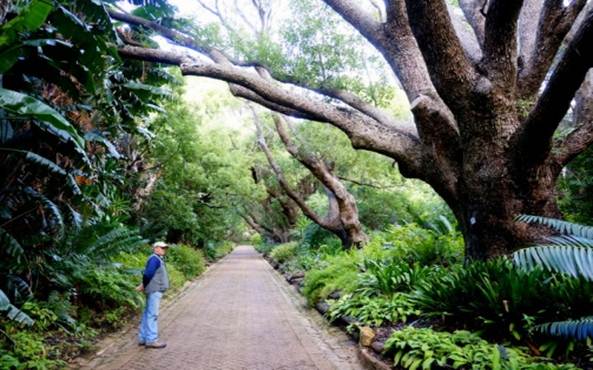
An avenue of Camphor trees was planted by Cecil John Rhodes around the end of the 19th Century to link his cottage in Muienberg with his Groote Schuur estate, and has been preserved within the gardens. 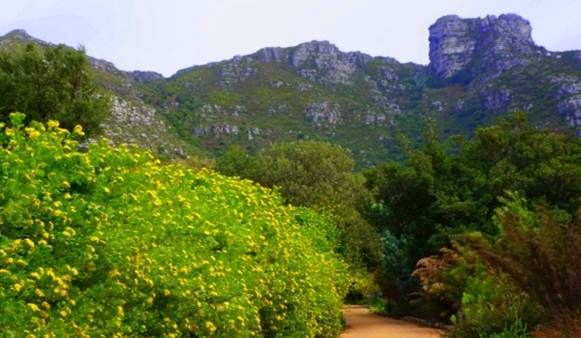
Although we saw it in Autumn, it was a delight to see bushes of these daisies and many varieties of Proteas, attracting the indigenous sugarbirds. 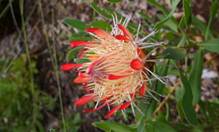 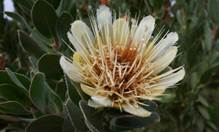
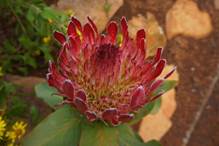 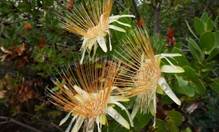
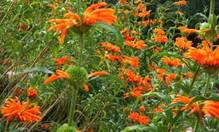 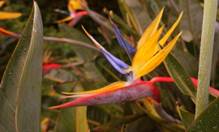
Monkey flowers are very commonly found and the Strelitzia is S.A’s absolute best flower 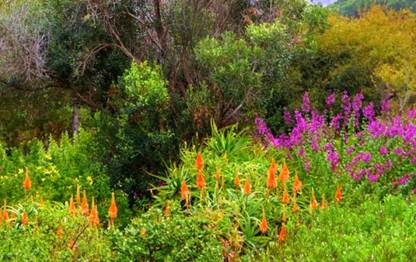 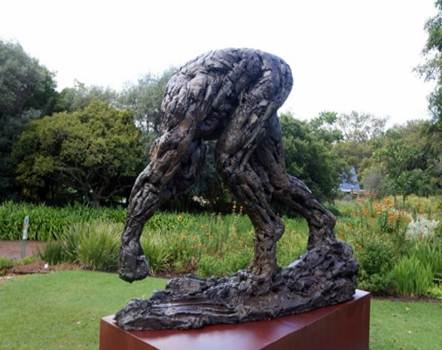
Sculptures by Dylan Lewis explores the ‘wild’ nature without us With poems by Ian McCallum: Wilderness has been confused with savagery. Wilderness is ‘Hard wired” It is part of our esential survival and emotionally charged expressions of territory, curiosity, nurturance, lust, rage, fear and play. To distance ourselves from, and worse, to eny our wild ancestry is to witness its return in all manner of savage outbursts. We have to stop talking about the earth in need of healing. The Earth does not need healing, we do. Our task is to rediscover ourselves in nature. It is an individual choice. And how or where do we begin. We begin exacly here are right now. When we look at the world as a mirror, when we discover that our sense of freedom and authenticity is linked to the well being and authenticity of others and that includes the animals, the trees and the land. 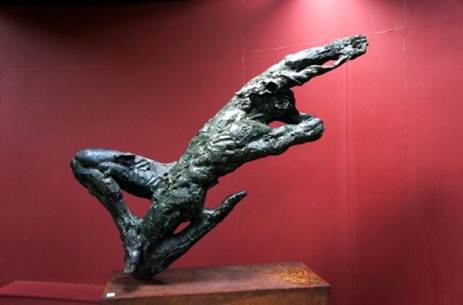

Sculptures made from stone from the diamond mines is now providing good remuneration for the artists who are expressing themselves by polishing some parts, leaving other parts natural. 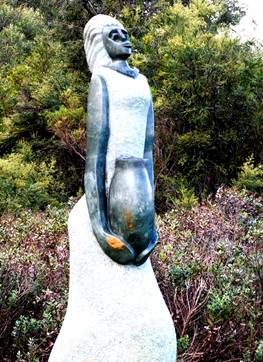 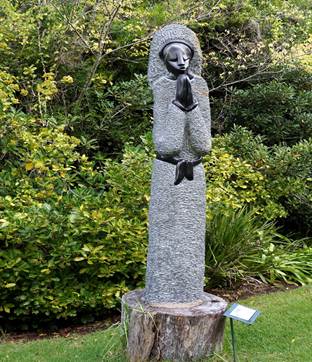
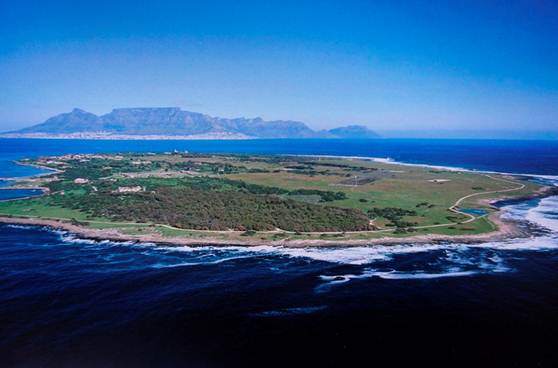
Robben Island, Cape Town Just South of Cape Town, Robben Island so called because it was named ‘Robbe Island’ (seal island) by the Dutch in the mid-17th Century. It has seen much human suffering. As early as 1636 it served as a penal settlement, and was taken over by the South African Prisons Service in 1960. When the last political prisoners were released in 1991, the South African Natural Heritage Programme nominaed the island for its significance as a seabird breeding colony, hosting more than 130 bird species. 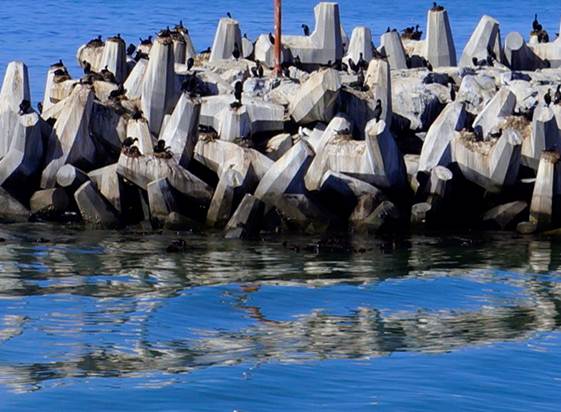
Here’s a whole load of cormorants, nesting on the harbour’s protective barrier! 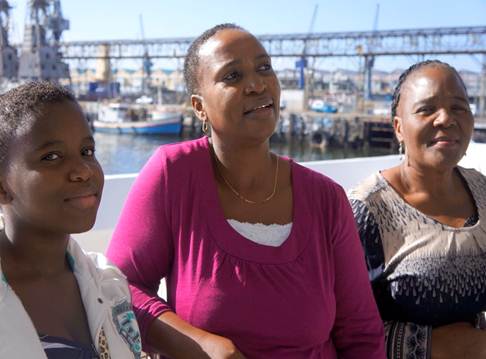
I got chatting to some of the women on the ferry, admiring their hairstyles 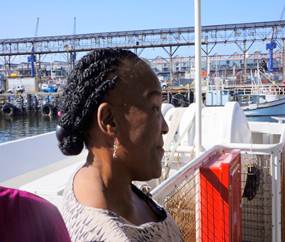 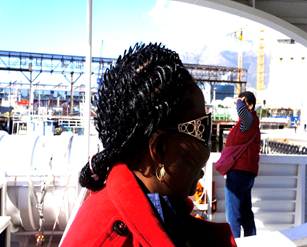
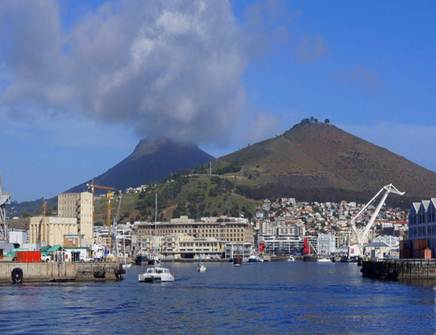
An old local legend tells of the Dutchman, Jan van Hunks, who engaged in a smoking contest with a stranger on the slopes of Devil’s Peak.. After several days, the disgruntled stranger had to admit defeat and revealed himsel as the Devil. Vanishing in a puff of smoke, he carried van Hunks off with him, leaving behind wreaths of smoke curling around Devil’s Peak (which is where the cloud begins pouring over the mountain, forming the famous ‘tablecloth’) as in this photo. A great many people who originally come from Kwa Zulu Natal, the homeland of Nelson Mandela, are on board the ferries to visit Robben Island, where Nelson Mandela was jailed for almost 3 decades, along with many other political prisoners during the Apartheid years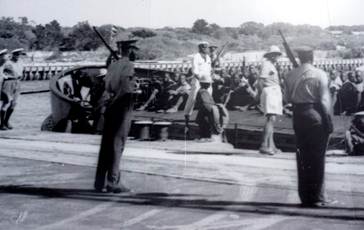 This photo is on the wall to greet visitors as they disembard from the ferry, showing that coloured guards were employed to supervise the unloading of the prisoners arriving by barge in the 1960’s | 
